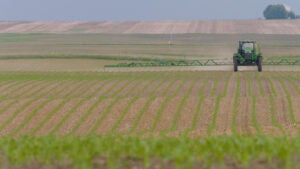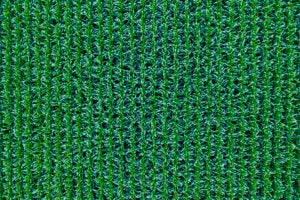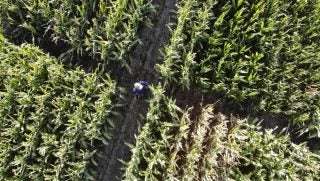Weeds are detrimental to corn because they undermine crop formation and uniformity, particularly in the early stages of corn’s development, leading to a negative impact on yield. And with national harvest-season averages coming in at just under $5 per bushel, it’s a disservice to the financial stability of any farm operation to leave money on the table.
Weeds and corn plants compete for the same — often limited — resources, most notably nutrients, sunlight, and water. If weeds steal too many of these resources from the crop, the plant can become stressed, laying the groundwork for lower yields.
Universities have spent years exploring the growth period during which yield loss in corn becomes irreversible due to weed pressure.
Experts say it’s important for fields to start clean, because the early vegetative stages are when corn is the most sensitive.
“At the five- or six-leaf point in time, corn has really set the foundation for the rest of the year,” said Seth Strom, a field R&D scientist with Syngenta. “That’s really the time you want to focus on — the emergence onward to limit any competition.”

Dr. Stevan Knezevic, with the University of Nebraska-Lincoln Department of Agronomy and Horticulture, details that the critical period falls roughly between V3 (when three collared leaves are visible) to almost V12 (when the plant is close to four feet tall), during which time weeds must be controlled to avoid yield losses. Weed competition through this growing period affects ear and cob formation.
“Corn itself can be competitive if it gets started on the right foot in a clean field,” said Strom, who is based in Illinois. “The goal is to get to canopy; once you get to the canopy, you get some natural weed control just from the crop canopy itself.”
Early season weed control is best when using a full, labeled rate of an effective preemergence. A weed such as waterhemp, for example, should be targeted by a mix with multiple reliable active ingredients and multiple modes of action.
“Farmers are always managing risk, and so you want to manage it in such a way that you maximize your return on your inputs,” said Dain Bruns, an R&D scientist who has been with Syngenta for nearly 25 years. “And a major way to do that is to use an effective pre-emergence herbicide, because that eliminates that early season weed competition.”
Syngenta’s newest innovation, Storen™ corn herbicide was registered by the U.S. Environmental Protection Agency over the summer and will be available for use in 2024 subject to state approvals. Data shows Storen delivers greater than 95 percent weed control on nine out of 10 fields1 and is effective up to three weeks longer than its competitors2, leading to a 4 to 5 bu/A yield advantage3.
Storen combines four powerful, long-lasting active ingredients — bicyclopyrone (BIR), mesotrione, S-metolachlor, and pyroxasulfone — plus the crop safener benoxacor — designed to work together to provide maximum residual performance.
“The neat thing about Storen is that all these active ingredients are well-established and proven. And we’re putting them in a mix that hasn’t been done before and really complements and accentuates the activity of each,” Bruns explained. “When you put them together, they give broad-spectrum grass and broadleaf weed control with excellent residual control of late emerging weed before and after the crop canopy develops.”

The length of residual control is a unique element of Storen corn herbicide. Farmers often operate in the now, but to look ahead, longer residual weed control limits weed-seed production for next year. So, in addition to the more flexible application window that Storen provides, and the safety of this herbicide for use around corn plants, benefits include the reduction of weed pressure in future seasons and positioning the crop for its best yield potential.
Combating weeds is often a “numbers game.” Less weeds per corn plant means less competition for resources and less opportunity for the weeds to go to seed. And while four or five weeds per square foot may not sound like a lot, scaling that to a per-acre basis where uncontrolled weeds could far outnumber the corn crop can be detrimental in terms of money and labor for a grower.
“Flexibility is key. Every grower is going to have a little bit different of a program that they want to use, and every year is different,” Strom said. “That’s what makes what we do in the field interesting — as well as challenging. At some point, things probably aren’t going to go to plan, so when you have a wide application window, as Storen can be applied, there are massive benefits.”
All this helps address weed pressure for growers before weeds get to five or six inches (about the length of a smartphone) and have irreversible consequences for harvest season. If corn plants are positioned to focus on strong root growth during their early stages rather than prematurely putting energy into upper canopy growth to outcompete weeds, that helps build toward better yields later in the season.
“If you don’t use that pre-emergence herbicide, you run the risk of losing so much yield potential,” Bruns said.
This article was published on behalf of Syngenta. Visit this page to find a Syngenta Crop Protection Specialist near you.
Ryan Tipps is the founder and managing editor of AGDAILY. He has covered farming since 2011, and his writing has been honored by state- and national-level agricultural organizations.



